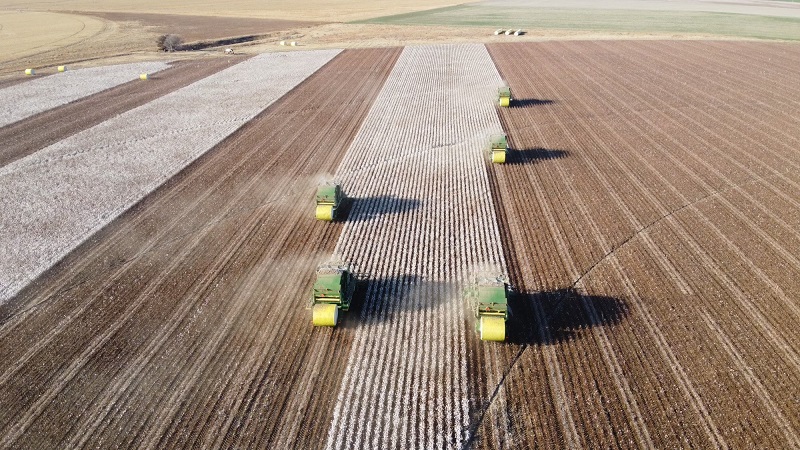Consistent Performance, New Trait for BASF Seed Brands
Given the start of the 2023 growing season, it was disappointing across much of the Cotton Belt that growers ended up facing more dry weather like 2022.
And as some areas were too dry, it was likewise too wet in others – especially the cotton producing area north of Amarillo where wet weather simply blew through the cutoff date for cotton planting in the area.
We lost a lot of our dryland acres and our irrigated acres suffered as well.
“Every year brings a new learning experience and new surprises,” says Kenny Melton, Western Region Agronomic Manager for BASF. “We can deal with that.”
Melton reports that growers saw really good performance from some of the company’s FiberMax and Stoneville varieties.
“I don’t mean that we knocked out four bales on 12 inches of water, but it was still good,” he says. “We saw good fruit set and retention into the latter part of July when things started melting down. Some areas in the West struggled with some insects to a certain extent, as well as challenges elsewhere in the Cotton Belt with plant bugs and thrips.”
With harvest results mostly limited to South and Coastal Texas, Melton says he was pleased with the results to date, especially given the level of drought stress and heat stress on the crop, which showed good performance in terms of holding on to the fruit.
“All in all, given the level of drought stress and heat stress that we had, I think we turned in a solid performance with a lot of our varieties on there,” he says.
In terms of a variety report card for the year, Melton offers these comments:
- “FM 2498GLT is a variety that has done well for us this year. It’s a strong performer that comes up well and is a solid yielder. It’s also early enough that it can get set before situations get too dry and still be able to take advantage of any moisture that comes along later in the year.”
- “FM 2398GLTP is a high performing three gene Bt variety. It’s a little earlier than FM 2598GLT and is able to fit areas a little further north. And we still have FM 1621GL – our really solid performer in a straight herbicide variety.”
- “On the Stoneville side, ST 4595B3XF, ST 4990B3XF, and ST 5091B3XF all had strong years, as did ST 4993B3XF, the company’s biggest variety.”
Melton is especially excited about the BASF 2023 economic performance trials with their new Axant Flex materials, which will be available in 2024. He says prospective varieties containing the trait – which features resistance to glyphosate, glufosinate, dicamba, and HPPD herbicides — really look good in South Texas and West Texas. The breeding and research staff are eagerly awaiting harvest results.
Alite 27, a new HPPD herbicide product for use on Axant Flex varieties, is still awaiting EPA approval and will not be available for the 2024 growing season.
As with any growing season, growers have choices to make to prepare for their 2024 crop. Melton offers some advice.
“Know what the strengths and weaknesses of your field are,” he suggests. “When making your variety selections, look for disease issues, maturity issues, for places where the soil is weaker. Diversifying your variety portfolio is really important. And I think it’ll help avoid any big losses one way or another.”









